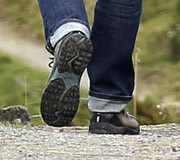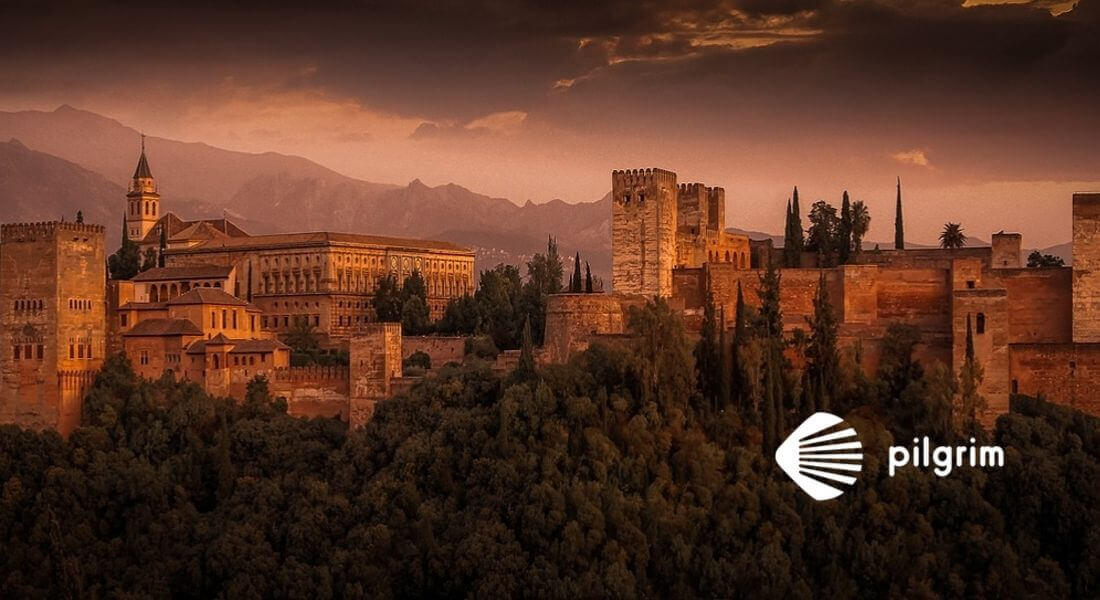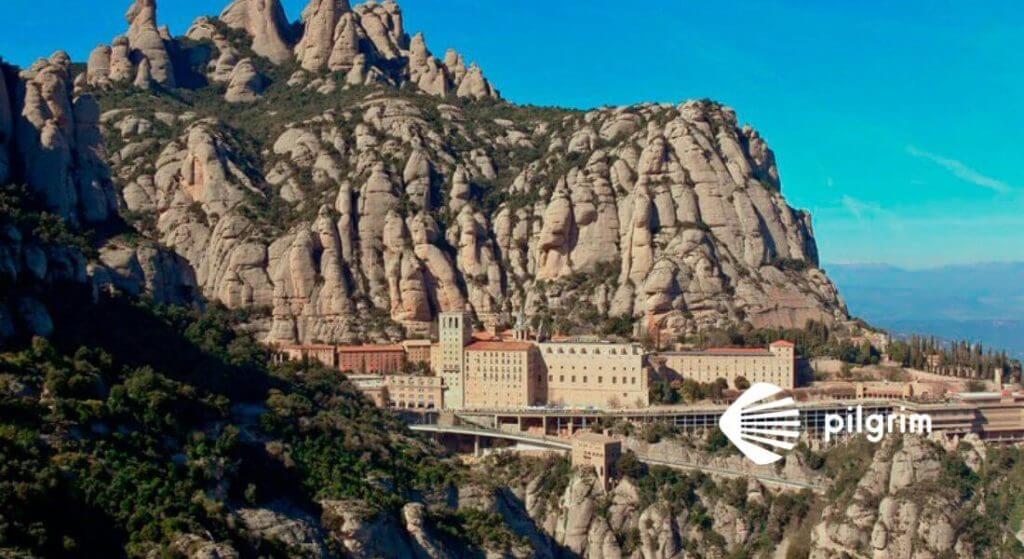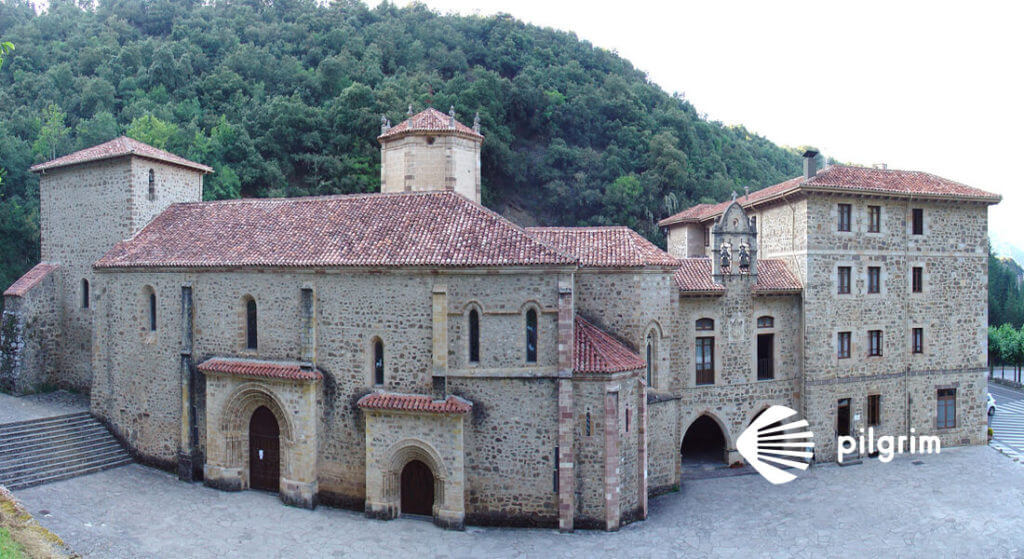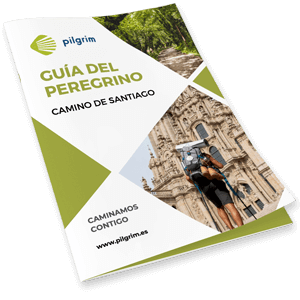As you may already know, there are a large number of secondary routes that link the Camino de Santiago with the whole of Spain, to the point of developing a network of Caminos that cover the entire peninsular territory. On this occasion, we will talk about one of the most important routes in the south, the Camino Mozárabe.
You may also be interested in: The Camino from Madrid
Information and History
The Camino de Santiago Mozarabe (Mozarabic Way of St. James) is one of the Ways of St. James that connects the south of Spain with one of the main routes, the Silver Way. This route is made up of a series of roads that became really important in the Middle Ages, especially during the Muslim occupation of Spanish territory. Their importance increased due to the fact that they were necessary routes for communication between the most important ports of Al-Andalus and the main inland cities.
Why it is called Mozárabe
As mentioned above, the territories were occupied by the Muslim people. However, after the discovery of the tomb of St. James the Apostle, the Christians who lived in this area decided to preserve their faith and began the pilgrimage to the Cathedral. These Christians were called Mozarabs, hence the name of the Mozarabic Way.
Evolution and Present days
After the Reconquest of Spanish territory, these routes continued to be important, but not at the same level as in former times. It was not until relatively recently, and after years of work, that the Asociaciones de Amigos del Camino de Santiago (Associations of Friends of the Pilgrims’ Route to Santiago) in collaboration with other institutions, once again highlighted the value of these forgotten pilgrimage routes and tried to give them their lost value in order to start the pilgrimages to the Cathedral once again.
Today, its growth is remarkable and, within the secondary routes, it is one of the most important.
Stages of the Camino Mozárabe
The Camino Mozarabe can be started from 3 different routes: Jaén, Málaga and Almería. This is why we will begin by separating the stages of each of these routes until we mention the common ones, since these three routes end up joining later in the town of Baena.
From Baena to Mérida, where it joins the Silver Route, it will be the same route.
Stages Camino Mozárabe from Jaén to Baena
| Stage | Start | End | Lenght |
|---|---|---|---|
| Stage 1 | Jaén | Martos | 21 km |
| Stage 2 | Martos | Alcaudete | 23 km |
| Stage 3 | Alcaudete | Baena | 25 km |
Stages Camino Mozárabe from Almería to Baena
| Stage | Start | End | Lenght |
|---|---|---|---|
| Stage 1 | Almería | Santa Fé de Mondujar | 25 km |
| Stage 2 | Santa Fé de Mondujar | Alboloduy | 15 km |
| Stage 3 | Alboloduy | Abla | 27 km |
| Stage 4 | Abla | Huéneja | 26 km |
| Stage 5 | Huéneja | Alquife | 21 km |
| Stage 6 | Alquife | Guadix | 22 km |
| Stage 7 | Guadix | La Peza | 20 km |
| Stage 8 | La Peza | Quéntar | 23 km |
| Stage 9 | Quéntar | Granada | 20 km |
| Stage 10 | Granada | Pinos Puente | 19 km |
| Stage 11 | Pinos Puente | Moclín | 16 km |
| Stage 12 | Moclín | Alcalá la Real | 22 km |
| Stage 14 | Alcalá la Real | Alcaudete | 24 km |
| Stage 14 | Alcaudete | Baena | 25 km |
Stages Camino Mozárabe from Málaga to Baena
| Stage | Start | End | Lenght |
|---|---|---|---|
| Stage 1 | Málaga | Junta de los Caminos | 11 km |
| Stage 2 | Junta de los Caminos | Almogía | 12 km |
| Stage 3 | Almogía | Villanueva de la Concepción | 18 km |
| Stage 4 | Villanueva de la Concepción | Antequera | 16 km |
| Stage 5 | Antequera | Cartaojal | 11 km |
| Stage 6 | Cartaojal | Villanueva de Algaidas | 13 km |
| Stage 7 | Villanueva de Algaidas | Cuevas Bajas | 10 km |
| Stage 8 | Cuevas Bajas | Encinas Reales | 6 km |
| Stage 9 | Encinas Reales | Lucena | 20 km |
| Stage 10 | Lucena | Cabra | 13 km |
| Stage 11 | Cabra | Doña Mencía | 12 km |
| Stage 12 | Doña Mencía | Baena | 9 km |
Stages Camino Mozárabe from Baena
| Stage | Start | End | Lenght |
|---|---|---|---|
| Stage 1 | Baena | Castro Del Río | 25 km |
| Stage 2 | Castro Del Río | Córdoba | 15 km |
| Stage 3 | Córdoba | Cerro Muriano | 27 km |
| Stage 4 | Cerro Muriano | Villaharta | 26 km |
| Stage 5 | Villaharta | Alcaracejos | 21 km |
| Stage 6 | Alcaracejos | Hinojosa Del Duque | 22 km |
| Stage 7 | Hinojosa Del Duque | Monterrubio de La Serena | 20 km |
| Stage 8 | Monterrubio de La Serena | Campanario | 23 km |
| Stage 9 | Campanario | Medellín | 20 km |
| Stage 10 | Medellín | San Pedro de Mérida | 19 km |
| Stage 11 | San Pedro de Mérida | Mérida | 16 km |
Once in Mérida, the Camino Mozarabe joins the Silver Route at stage 10 of its route. If you decide to continue it, you will have 28 stages and approx. 750 km left to reach the end of the Camino, Santiago de Compostela.
Map of the Camino Mozárabe

Characteristics of the Camino
As you may have noticed in the stages, its duration does not comply with the average number of kilometres that is common in the rest of the Jacobean routes, 25 km/stage. Particularly noteworthy is the route from Malaga, which has several stages of less than 15 km. If you are an experienced pilgrim, we recommend that you do two stages per day to shorten the days and be able to cover a greater length of the route.
As for its profile, it does not represent an excessive difficulty, gentle hills and dirt tracks, on arrival in Granada, so the route should not be one of your worries. One important consideration is that, being in Andalusia, the summer makes it a tough and even dangerous experience. Walking at this time of year is not at all recommended.
If you decide to walk this route, do it in other seasons, winter or early spring and autumn. If you do it in the summer months, you should be prepared with a cap or hat to avoid the sun’s rays, and with a good water bottle that you should refill whenever possible, as keeping well hydrated is vital on this route.
The landscapes you will come across are mostly olive groves, great views for those who have never seen them before, but repetitive if you already know them, as there are several kilometres where you will only be able to see these fields. From Granada onwards, as previously mentioned, the landscape changes and is characterised by dirt tracks.
Doing the Camino Mozarabe by bicycle
It will not be difficult to do it by bike, the route is easy to follow. You simply need to pre-plan your itinerary to match the stages at their correct endings. To do this, you can estimate the number of kilometres you do per day and then transfer it to the stages mentioned above and apply the number of kilometres.
Signposts
Thanks to the efforts of the associations and collaborating entities, this route is well signposted, although there is still room for improvement compared to the main routes. That is why before deciding to do this route, it is a good idea to make sure of the itinerary prior to departure, in order to have a clear idea of the route to follow.
What to see on the Camino Mozárabe
The towns along this secondary route do not have a large population, and all have their own charm, but we recommend that, should you wish to visit any of the towns on your itinerary at your leisure to the point of spending an extra day, you should spend more time in the provincial capitals: Almería, Málaga, Jaén, Córdoba, Granada and Mérida.
La Alhambra (Granada)
It is, without a doubt, the most important historical and cultural heritage that you will find on this route, in fact not only on this route, but in the whole of Spain, as it is the second most visited monument in Spain, only behind the Sagrada Familia (Barcelona).

It is a complex of palaces, gardens and a fortress that housed a citadel within Granada itself in the times of Al-Andalus.
Mosque-Cathedral of Cordoba
It is the most important monument in Cordoba and was created as a mosque in the time of the Emirate of Cordoba. Later, after the Reconquest of Spanish territory, it was granted the status of a Christian cathedral. It is certainly worth taking the time to appreciate its beauty and the significance it has in the history of the city.
Roman Theatre of Mérida
As you leave Andalusia, you will leave behind the monuments of the ancient Muslim territory until you enter the region of Extremadura, where the Roman Empire is still well represented in the peninsula. A good example of this is its Roman theatre, inaugurated in 16-15 BC.
Gastronomy
It’s not all about walking; in your moments of rest you will be able to savour the culinary delights of Andalusia. Here is a list of the foods you should not miss on your way along this route:
- Gazpacho: Cold tomato soup with some added ingredients such as peppers, garlic, onion…
- Salmorejo: Similar to gazpacho but with bread and thicker.
- Pescaito frito: Squid, anchovies, cuttlefish or other types of fish, battered and fried.
- Migas: Stale bread, chorizo, garlic, olive oil, water and salt.
- Tortilla de camarones: Thin, crispy tortilla made with shrimp dough.
- Pipirrana: A salad of onion, tomato, green pepper and cucumber.
- Jamón de Jabugo: Typical cured ham from the Huelva mountains
It’s time for adventure
We hope that all this information will help you to know more about the Camino Mozarabe and to be able to plan it in case your intention is to make the pilgrimage. If you have not yet decided to do it, or do not see this route as a possibility for your first adventure on the Camino de Santiago, take a look at the other routes of the Camino de Santiago or leave us your contact so we can advise you in the best possible way.
Plan your adventure!
We give you all the information without any commitment!
